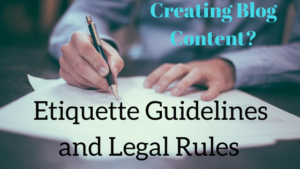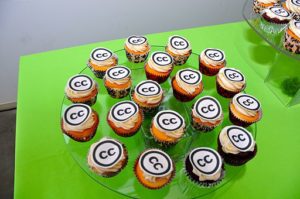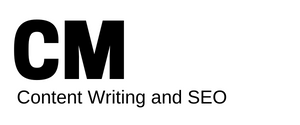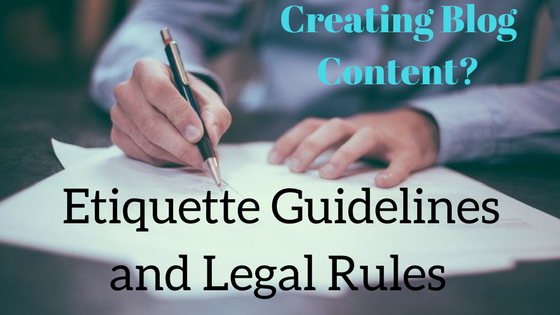
Violating copyright law when you (or the people you hire) are creating blog content is fairly easy if you’re not aware of the laws. And the punishment is harsh—from litigation to cease and desist letters.
Even if you don’t face legal issues, bad blogging etiquette will damage your online reputation. Let’s look at how to avoid both situations by understanding blogging etiquette, copyright law, and the fair use doctrine.
If you Created it, it’s Yours
The second you publish a blog post on your site, it’s your property and it’s protected by copyright. The same goes for images and infographics you create.
A notable exception (for freelance writers especially) is so-called “works made for hire.”
For example, let’s say you hired me to write your blog content for a month. Unless we had a separate agreement, everything I created for you would be yours.
In fact, if I copied that work and published it as my own, I’d be infringing on your copyright.
The rule of thumb for copyright is that if someone created it, and it exists in a static display, it’s copyrighted.
Respecting these laws is both good etiquette and good practice to avoid angering any other content creators.
Something Neil Patel pointed out in this guest post, is that even comments people leave on your site are copyrighted by the creator.
Giving Credit Where Credit is Due
It’s very easy to give credit for information you used from another site. All it takes is a link and a quick mention to the creator of that content.
This covers you legally, but it also helps you maintain a good reputation on the web.
Even if you create good content that may help another blogger’s users, they’re not going to link to you if you’re known for copying their work with no attribution.
The other situation you should do this in is when your source public domain images.
Most of these are subject to a Creative Commons License. Most of the time all you must do is name the source of the image and include a link to the license.
See below for what the Creative Commons wiki considers a properly attributed public domain image. (Includes, source, title, author, and creative license)

“Creative Commons 10th Birthday Celebration San Francisco” by tvol is licensed under CC BY 2.0
If Someone Asks, Take it Down
Even if you think you’re protected by Fair Use, it probably makes more sense just to take down whatever content you copied.
There’s no sense in getting embroiled in a long dispute that might damage your online reputation or cost you money in legal fees.
When Someone Copies You
If you make content that people love, chances are they’re going to reference it on their own site.
Personally, I’d encourage my readers to reference anything I write that they find useful. I think it’s good for business. But if you want someone to take it down, just ask them nicely.
Chances are you’ll have no problem.
What does Fair Use Mean for Blog Content Creators?
Fair use is the big gray area in copyright law.
It’s an exception to copyright law in that it allows people to copy someone else’s work provided it fits under the definition of Fair Use.
Before we get into what constitutes fair use it’s important to remember two things:
One: I am not a lawyer. If you’re not sure what you’re doing is covered under fair use, ask a lawyer, or don’t do it.
Two: Fair Use Doctrine was intentionally made open to interpretation. The determination varies on a case-by-case basis.
With that out of the way, let’s look at the four factors judges will evaluate to determine if something could be considered fair use:
1. Purpose and Character of Use
The legal website Nolo says that the first factor is the most important in determining fair use.
Replicating a copyrighted work for commercial applications is not allowed. But if you’re using the copyrighted work to educate, comment, or analyze something, you’re in the clear.
So if I were to write a review of King Kong, using a snippet of dialogue to illustrate one of my points, it would be considered fair use.
What’s also under consideration is whether your use of the copyrighted material is transformative. A transformative use creates a new expression of the original idea.
For example, I recently learned about HubSpot’s Growth Driven Design methodology. The educational content they’ve created is theirs. But if I want to write some blog content about how that methodology applies to content writing, I can do that.
2. Nature of the Copyrighted Work
There’s a big difference between copying information from a news report and copying it from a novel.
Facts and ideas are not copyrightable, but expression is. Additionally, whether the work you’re copying has been published before often makes a difference.
Copyright law is meant to protect an author’s right of first publication. When you publish an unpublished work, you’re infringing upon that right and violating copyright law.
3. Amount of the portion used in relation to the copyrighted work as a whole
Back to my King Kong review example.
If I were to reference a snippet of dialogue, that would probably be okay. But if I were to copy dialogue from an entire 10-minute portion of the movie, I might be at risk.
The same goes for copying a paragraph in a book (probably okay) versus copying a full chapter of a book (not okay).
4. Effect of the use upon the potential market for or value of the copyrighted work
If your use of a piece of copyrighted content affects the market of the work, then you’re not protected under copyright law.
Go back to my HubSpot example. Let’s say instead of writing a blog post about how HubSpot’s Growth Driven Design applies to blog content writers, I bootleg their videos and use them for my own course on web design.
This violates the fourth factor because I’m spreading out the market for HubSpot’s instructional course. Now instead of going to HubSpot to learn about Growth Driven Design, web traffic can go to my site.
HubSpot might see a reduction in email subscriptions, prospects, and customers. Thus, I’ve affected the market of the copyrighted work.
Fair use can be hard to determine for other applications, but for blog content writers, it shouldn’t be too difficult.
Follow these guidelines and you’ll have no problem creating blog content without running afoul of proper etiquette or copyright laws.

